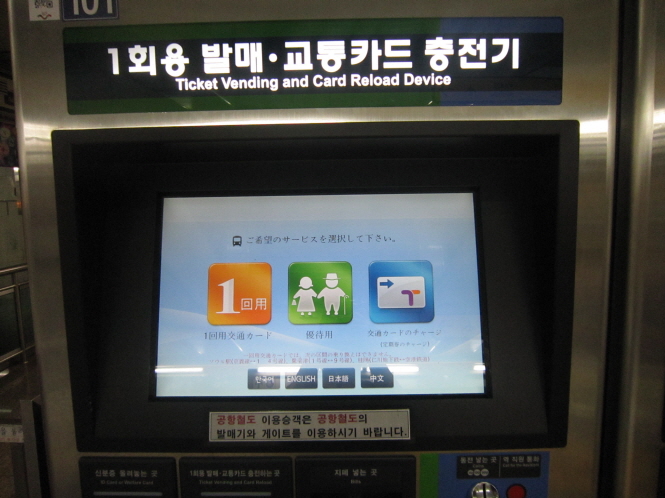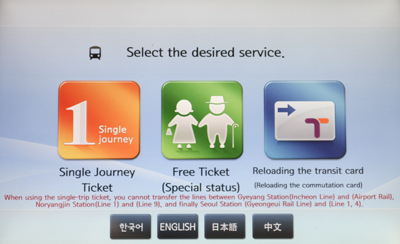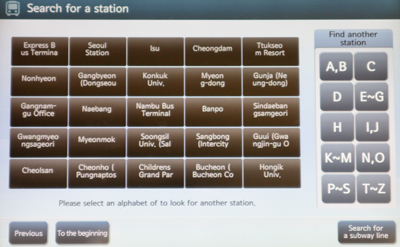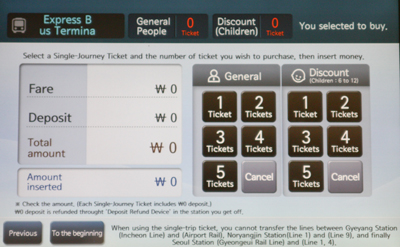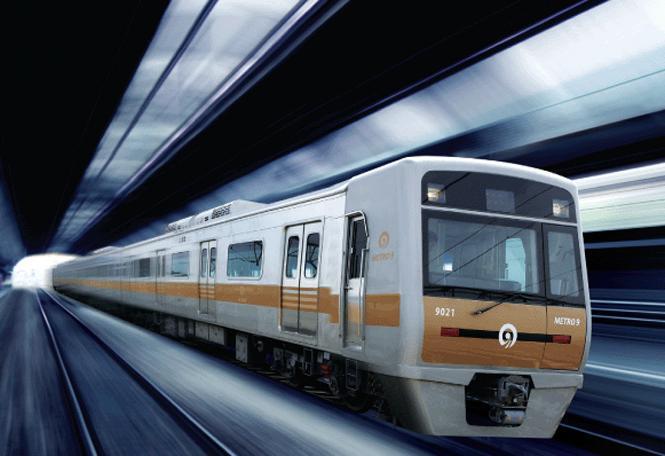
Search for convenient routes and get helpful information
・Search for subway routes using Visit Seoul (click here)
: You can search by entering your point of departure and destination. It’ll tell you the approximate travel time, and you can also search for bus routes or a combination of bus and subway routes.
・Download a map of the Seoul subway (click here)
: On the top right-hand side of the page, click「Download」. You can click on each station to see a time schedule, and you can choose your point of departure and destination to see your route options and approximate travel time.
・View the Seoul Metropolitan Rapid Transit Corporation’s interactive map (click here)
: If you click on a station, you can view the timetable for that station. You can also choose a route from your point of departure to your destination, and see the approximate required travel time.
Line information
|
|
Line 1 – blue |
This was the very first subway line. Seoul Station is at the very center of this line, and it extends all the way to Suwon, Incheon, Cheonan and other areas outside of Seoul. |
|
|
Line 2 – green |
This line goes in a loop and connects such popular stations as Hongik Univ., Shinchon, City Hall, Dongdaemun History and Culture Park, Jamsil, Samseong and Gangnam. |
|
|
Line 3 – orange |
This line stretches all the way from Ilsan in Gyeonggi Province to the southern part of Seoul. On this line you’ll find Sinsa, Apgujeong, Express Bus Terminal, which are popular stops in the Gangnam area, as well as Anguk and Jongno 3-ga Stations, from which you can access the popular tourist neighborhood of Insadong. |
|
|
Line 4 – sky blue |
This line connects parts of northern and southern Seoul. One this line you’ll find Daehangno (Hwehya Station), Dongdaemun Market (Dongdaemun Station), Myeongdong, Namdaemun, and Seoul Station, which are all great tourist areas. |
|
|
Line 5 – purple |
This line connects Gimpo Airport to Seoul. You can connect to lines 1 and 3 at Jongno 3-ga Station. |
|
|
Line 6 – brown |
On this line you can find World Cup Stadium as well as Itaewon, a popular hangout for foreigners and great for shopping and eating a wide array of international food. |
|
|
Line 7 – olive green |
This line starts in Euijeongbu in northern Seoul and extends south to the Gangnam area. The high class Cheongdam area can be found off this line. |
|
|
Line 8 – pink |
This line connects southern Seoul to Seongnam. On this line you’ll find the famous Munjeong-dong shopping area (from Munjeong Station) neighborhood as well as Seoul’s biggest market, Nongsanmul Market, and Garak Market, which is a popular fish and agricultural market. |
|
|
Line 9 – gold |
This line was completed in July 2009. Aside from the all-stop local train, this line also has an express train, which can go from Gimpo Airport to the Gangnam area in just 30 minutes. |
|
|
Bundang – yellow |
This line links the Gangnam area to the residential area of Bundang. It starts at Seolleung Station in Gangnam and goes down to Yongin City in Gyeonggi Province. |
|
|
Sinbundang – red |
This is Korea’s very first driverless train line and connects Gangnam, Pangyo, and Jeongja. On this line you’ll find Yangjae Citizen’s Forest and Jeongja-dong’s Cafe Street in Bundang. |
|
|
Jungang – emerald |
This line connects Yongsan Station in central Seoul to Yongmun Station in Yangpyeong-gun, Gyeonggi Province. |
|
|
Gyeongui – light emerald |
This line extends from Seoul Station to Munsan Station, which is the closest station to the North Korean border. You can get off at Munsan Station, and tour the DMZ and visit Dorasan Station, which is actually on the Gyeongui line but is not used by civilians at this time. |
|
|
Gyeongchun – seafoam green |
This line was completed in December 2010. It connects with Line 7 at Sangbong Station and ends at Chuncheon Station in Gangwon Province. On this line you’ll find Cheongpyeong, Gapyeong and Chuncheon. |
Price
|
Passenger |
T-money |
Ticket |
|
Regular (19 years old and up) |
1,050 won |
1,150 won |
|
Youth (13-18 years old) |
720 won |
1,150 won |
|
Child (6-12 years old) |
450 won |
500 won |
※ Airport Railroad Line and Sinbundang Line cost an additional fee
※10 – 40 km: 100 won for every 5 km
※After 40 km: 100 won for every 10 km
※Discounts are given only to those residing in Korea who use T-money
Riding the subway
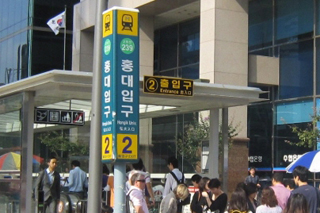 1.Finding the subway station
1.Finding the subway station
Subway station signs are written in Korean, English and other languages, so foreign tourists should be able to find it easily. The corresponding color to the line is also easily visible.
2.Purchasing a ticket
Since May 2009, passengers have been able to purchase a “single journey ticket.” If you purchase one, you must pay a deposit of 500 won, which you get back when you return the card at your destination.
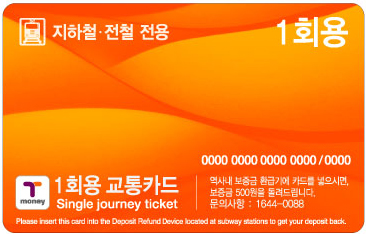 |
 |
| Front | Back |
3.Passing through the turnstiles
As you go through the turnstiles, scan your card over the T-money scanner.
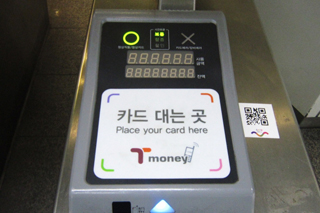

4.Transfer
When you’re on the subway train, you’ll notice if you’re approaching a stop where you can make a transfer because over the loudspeaker, you will hear music and then a voice will say which lines you can transfer to. You will also notice as you’re pulling up to a stop whether there are any other subway line colors on the wall. And, of course, you can also check the subway map. If you are transferring, most of the time, transfers take place within the subway station, but if you have to transfer at Noryangjin Station (lines 1, 9), you will have to come out of the turnstiles in order to transfer.
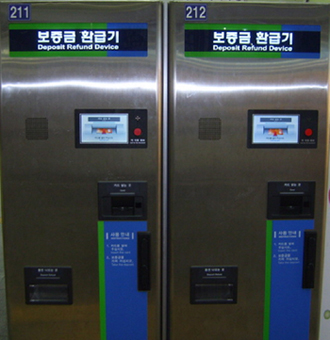 5.Getting off
5.Getting off
When you reach your destination, after you come out of the turnstiles, you’ll see a machine that says “Deposit Refund Device.” Insert your card in there, and it will refund your 500 won deposit.
● Lines 1- 4 (Seoul Metro)
Phone)1577-1234
https://www.seoulmetro.co.kr/
● Lines 5 – 8 (Seoul Metro Rapid Transit Corporation)
Phone)1577-5678
https://www.smrt.co.kr/index.jsp
● Line 9 (Metro 9)
Phone) 2656-0009

